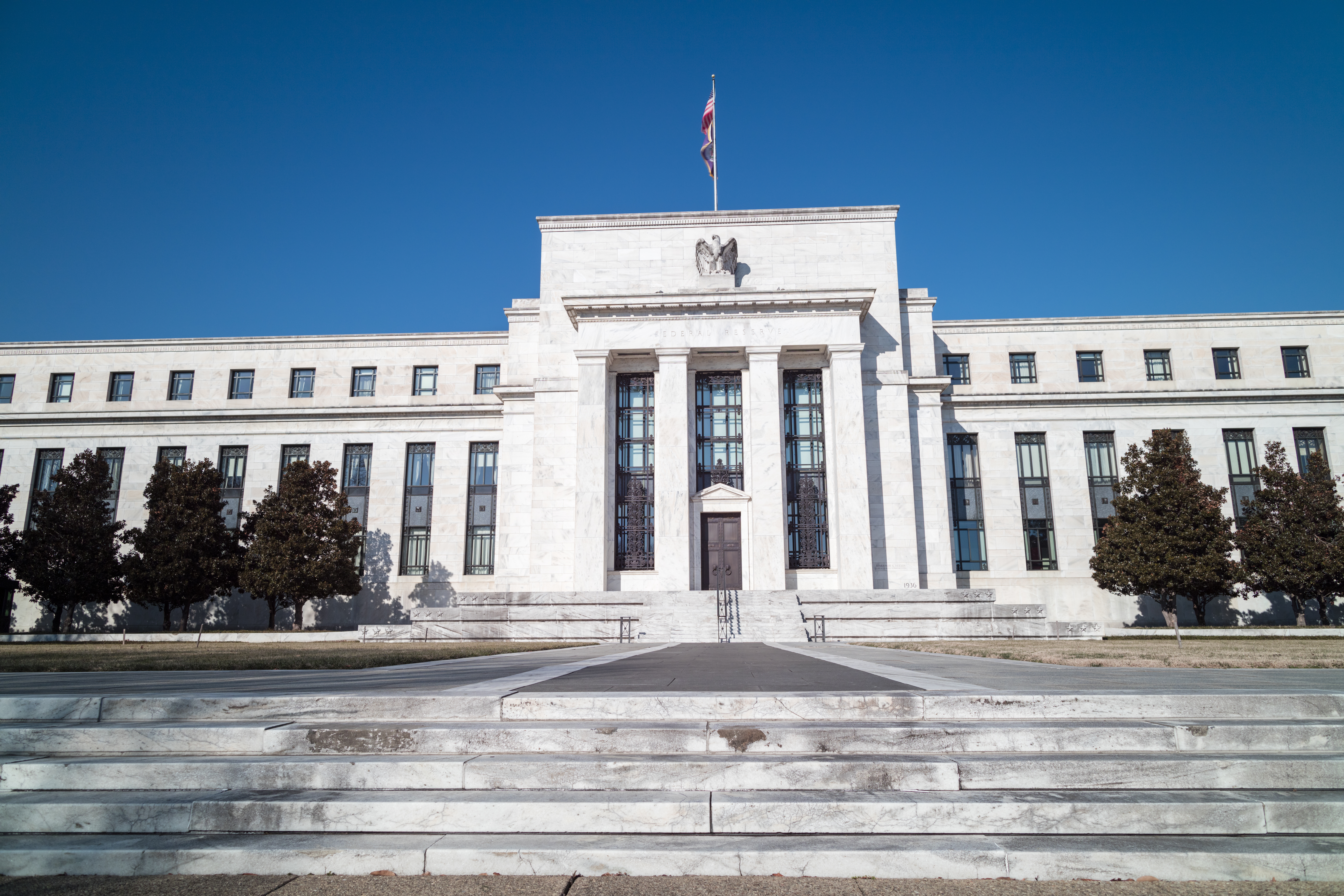Mortgage rates in the Washington DC metro area have been a key topic for homebuyers and sellers this fall. With economic uncertainty, elevated inflation, and a slowing job market, many residents are asking: Did the Federal Reserve’s recent rate cut lower mortgage rates? Following the October 2025 FOMC meeting, the answer is - yes, but only slightly. While the Fed’s decision to lower the federal funds rate by 0.25% has had a modest impact, long-term mortgage rates remain largely stable in the 6% range.
[The Fed’s October 2025 Decision]
On October 29, 2025, the Federal Open Market Committee (FOMC) voted to lower the federal funds rate to a new target range of 3.75% to 4.00%. This was the second rate cut this year, aimed at supporting employment growth amid signs of a cooling labor market.
The vote passed 10–2, with one member favoring a larger cut and another preferring no change. The Fed also announced plans to end quantitative tightening on December 1, marking a shift toward a more accommodative monetary policy. Chair Jerome Powell noted that while inflation remains above the 2% goal, the Fed must balance that concern with rising risks to employment. The committee will continue to monitor economic data before deciding on further moves.
[Current Mortgage Rates in the Washington DC Metro Area (as of October 30, 2025)]
- 30-Year Fixed Rate: Between 5.88% and 6.33%, with most DC-area lenders offering around 6% for qualified borrowers.
(National averages this week: 6.25%–6.28%)
- 15-Year Fixed Rate: Between 5.25% and 5.67%, offering lower interest but higher monthly payments.
- Other Loan Options: Adjustable-rate mortgages (like 7-year ARMs) hover near 6%, while FHA, VA, and jumbo loans vary slightly above or below the standard rates.
Overall, mortgage rates in the DC area have held steady in the 6% range, reflecting national trends. Refinance rates show similar stability, with most fixed options staying above 6%.
[Why the FOMC Cut Had Only a Modest Effect]
Although the Fed’s rate cut made headlines, mortgage rates didn’t fall dramatically — and here’s why:
- Fixed vs. Short-Term Rates:
The federal funds rate mainly affects short-term borrowing, like credit cards or home equity lines of credit. Fixed mortgage rates, on the other hand, are tied more closely to the 10-year Treasury yield, which reflects broader market expectations rather than direct Fed policy.
- Market Anticipation:
Investors had already priced in the expected Fed cut, meaning much of its impact was reflected in bond yields before the announcement. As a result, the 10-year Treasury yield and mortgage rates declined only slightly afterward.
- Economic Caution:
Lenders remain cautious due to ongoing inflation pressures and uncertainty in labor data following the recent government shutdown. The Fed’s move to end balance-sheet reduction by December did ease some long-term rate pressure, but not enough for a steep mortgage rate drop.
[The Bottom Line for Buyers and Homeowners]
After the October FOMC meeting, mortgage rates in the DC metro area dipped modestly - reaching their lowest levels of 2025, around 6.19% for a 30-year fixed loan.
While the change is not dramatic, it offers a small window of opportunity for buyers looking to lock in slightly lower rates.
If you’re considering buying or refinancing:
- Shop multiple lenders for personalized offers - small rate differences can lead to significant savings.
- Consider locking your rate if you find favorable terms.
- Stay informed - future rate cuts will depend on inflation and employment data.
<<Andy Kim's Thoughts>>
The October 2025 Fed meeting confirmed a gradual shift toward easier monetary policy, but mortgage rates in the DC area remain resilient near 6%. The modest decline reflects the complex mix of market forces - Treasury yields, inflation expectations, and economic data --> that influence mortgage pricing.
For now, homebuyers in Northern Virginia, Maryland, and DC can view this as a stabilizing period: rates are no longer climbing, and the housing market remains active.
If you’re planning to make a move, this could be a smart time to explore options before the market adjusts again.
[The Fed’s October 2025 Decision]
On October 29, 2025, the Federal Open Market Committee (FOMC) voted to lower the federal funds rate to a new target range of 3.75% to 4.00%. This was the second rate cut this year, aimed at supporting employment growth amid signs of a cooling labor market.
The vote passed 10–2, with one member favoring a larger cut and another preferring no change. The Fed also announced plans to end quantitative tightening on December 1, marking a shift toward a more accommodative monetary policy. Chair Jerome Powell noted that while inflation remains above the 2% goal, the Fed must balance that concern with rising risks to employment. The committee will continue to monitor economic data before deciding on further moves.
[Current Mortgage Rates in the Washington DC Metro Area (as of October 30, 2025)]
- 30-Year Fixed Rate: Between 5.88% and 6.33%, with most DC-area lenders offering around 6% for qualified borrowers.
(National averages this week: 6.25%–6.28%)
- 15-Year Fixed Rate: Between 5.25% and 5.67%, offering lower interest but higher monthly payments.
- Other Loan Options: Adjustable-rate mortgages (like 7-year ARMs) hover near 6%, while FHA, VA, and jumbo loans vary slightly above or below the standard rates.
Overall, mortgage rates in the DC area have held steady in the 6% range, reflecting national trends. Refinance rates show similar stability, with most fixed options staying above 6%.
[Why the FOMC Cut Had Only a Modest Effect]
Although the Fed’s rate cut made headlines, mortgage rates didn’t fall dramatically — and here’s why:
- Fixed vs. Short-Term Rates:
The federal funds rate mainly affects short-term borrowing, like credit cards or home equity lines of credit. Fixed mortgage rates, on the other hand, are tied more closely to the 10-year Treasury yield, which reflects broader market expectations rather than direct Fed policy.
- Market Anticipation:
Investors had already priced in the expected Fed cut, meaning much of its impact was reflected in bond yields before the announcement. As a result, the 10-year Treasury yield and mortgage rates declined only slightly afterward.
- Economic Caution:
Lenders remain cautious due to ongoing inflation pressures and uncertainty in labor data following the recent government shutdown. The Fed’s move to end balance-sheet reduction by December did ease some long-term rate pressure, but not enough for a steep mortgage rate drop.
[The Bottom Line for Buyers and Homeowners]
After the October FOMC meeting, mortgage rates in the DC metro area dipped modestly - reaching their lowest levels of 2025, around 6.19% for a 30-year fixed loan.
While the change is not dramatic, it offers a small window of opportunity for buyers looking to lock in slightly lower rates.
If you’re considering buying or refinancing:
- Shop multiple lenders for personalized offers - small rate differences can lead to significant savings.
- Consider locking your rate if you find favorable terms.
- Stay informed - future rate cuts will depend on inflation and employment data.
<<Andy Kim's Thoughts>>
The October 2025 Fed meeting confirmed a gradual shift toward easier monetary policy, but mortgage rates in the DC area remain resilient near 6%. The modest decline reflects the complex mix of market forces - Treasury yields, inflation expectations, and economic data --> that influence mortgage pricing.
For now, homebuyers in Northern Virginia, Maryland, and DC can view this as a stabilizing period: rates are no longer climbing, and the housing market remains active.
If you’re planning to make a move, this could be a smart time to explore options before the market adjusts again.
"Mortgage rates in the Washington DC metro area have been a key topic for homebuyers and sellers this fall. With economic..."


.jpg)
![[Realtors ONLY] When a Buyer Gets Cold Feet: The Real Estate Agent’s Role as a Trusted Guide](uploads/generated-image (2).jpg)
.jpg)